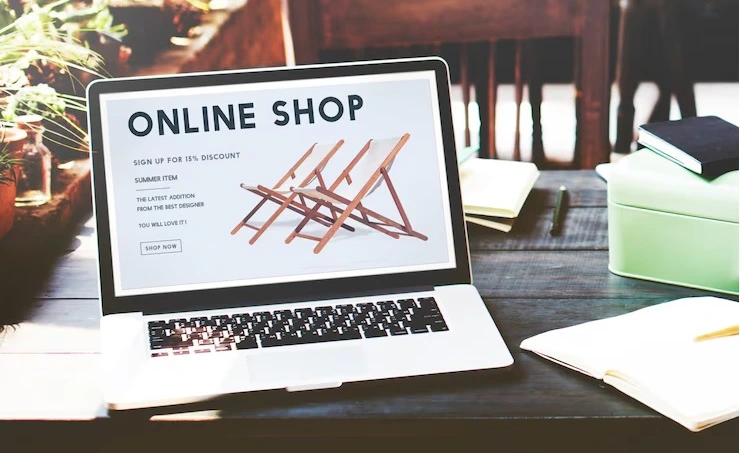B2B marketplaces are online platforms that facilitate the buying and selling of products between businesses. As the fastest-growing commerce model, they have become the preferred purchasing method, even within the B2B sector. In these marketplaces, there are three key roles: operators, sellers, and buyers. The specific roles and responsibilities of each stakeholder vary depending on the marketplace model.
In today’s digital-first world, businesses, like individual consumers, want the flexibility of self-service options when it comes to making purchases. This holds true even in the B2B marketplace, where products and services are typically more complex. Just as consumers enjoy quick, seamless buying experiences, businesses now expect similar convenience.
For B2B companies, there are various ways to offer self-service options. Some choose to provide the services and products themselves, while others partner with third-party companies. In some cases, businesses acquire other companies that already offer these services. However, no matter the approach, everything starts with identifying the needs of your customers.
Two primary needs tend to stand out in B2B marketplaces: First, customers need to trust your brand and believe in your company’s ability to deliver. This is especially critical for time-sensitive, high-stakes tasks like delivering fresh products.
Once you’ve identified your customers’ needs, the next step is finding partners who can help fulfill those requirements. Start by figuring out what types of products and services are needed, based on market research. After you know what you need to deliver, it’s time to identify the competencies required to meet these demands.
Once these competencies are clear, the focus shifts to finding partners who can fill in the gaps. These partners might be internal, such as departments within your company, or external, like other manufacturers or service providers who will act as sellers on your marketplace. The goal here is to create a network of sellers capable of offering a wide range of products or services to your customers.
Finally, it’s important to set up governance and agreements, define ways of working, and ensure clear communication with partners. You’ll also need to analyze your current suppliers and distributors and lock down contracts to ensure that the partnerships work smoothly.
Now comes the technical part: building the infrastructure for your marketplace. This includes setting up the technology that will allow your customers to access and interact with the marketplace, whether via a website or an app. At the same time, you’ll need a system in place to manage your sellers, their products, and services. Another key component is setting up secure payment systems to enable smooth transactions.
To make the user experience as seamless as possible, it’s important to develop a marketplace prototype that you can test with real customers. Gather feedback and use it to fine-tune the experience before scaling up. In addition to building the infrastructure, you’ll need to determine key performance indicators (KPIs) and metrics to measure success.
Preparing for the launch requires careful planning, especially around change management. You’ll need to assess where additional support may be needed and identify new processes to ensure the marketplace operates cohesively.
Once the infrastructure is set, you’re ready for launch. However, instead of launching on a large scale immediately, consider starting with a smaller, controlled pilot. This allows you to gather feedback and make any necessary adjustments before expanding.
When selecting pilot projects, focus on high-value and complex requirements that will test the system thoroughly. It’s also important to onboard service providers and ensure that they understand how to use the marketplace effectively.
Marketing your marketplace is just as important as its functionality. Make sure to promote it effectively to both current customers and potential new clients to drive traffic and generate interest. Once the pilot is complete and optimized, you can confidently roll out the full marketplace to all customers and markets.
Your work doesn’t end with the launch. To ensure long-term success, it’s essential to continuously monitor how your marketplace is performing. This means collecting data on how customers are using the platform, how sellers are performing, and overall marketplace revenue. By analyzing this data, you can pinpoint areas for improvement, make necessary changes, and optimize your marketplace’s functionality.
As the B2B marketplace space evolves, the companies that capture a critical mass of customers and sellers will establish themselves as leaders. They will not only dominate transactions but also collect valuable customer data that can be leveraged for future offerings.
To stay ahead in this competitive environment, companies need to be prepared for team structures to evolve. As the marketplace grows from launch to expansion, and eventually to long-term growth, teams will need to adapt to the changing needs of the business. This flexibility is key to ensuring that the marketplace remains successful as it matures.
Each step of this process, from identifying customer needs to monitoring performance, is vital in creating a thriving marketplace that meets both business and customer demands while supporting long-term growth.
To reduce the risks of joining a third-party marketplace, consider these strategies:
One key tactic is building partnerships with other sellers. Sharing data and insights, while protecting your own competitive edge, can lead to better collaborations.
Challenges of running your own platform
Starting your own B2B marketplace also comes with its own set of challenges:
Each model—whether a third-party marketplace or your own—requires careful consideration of your business’s goals, resources, and strategies for long-term success.
Now that you have a clear answer on how to create a B2B online store, it’s time to take the next step. Build your B2B ecommerce website with Nodespace and dominate the market.




